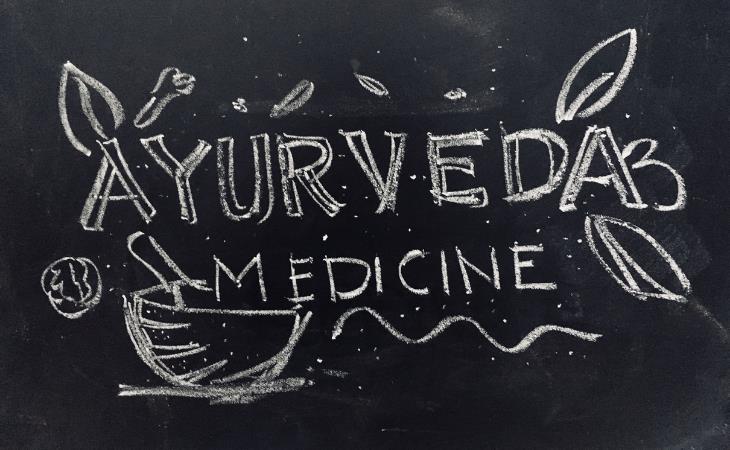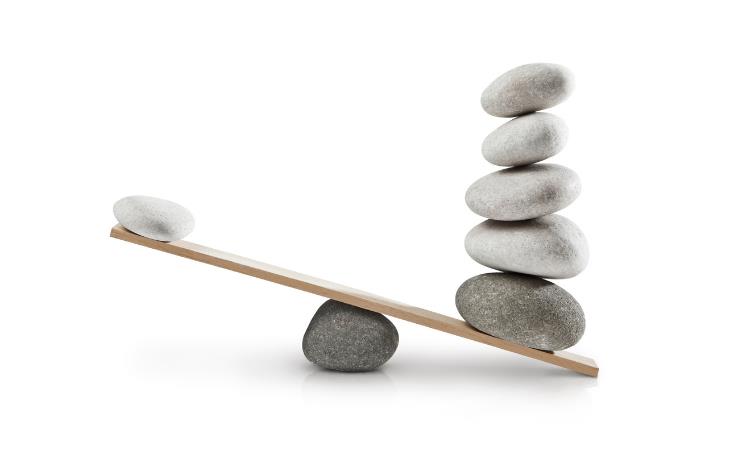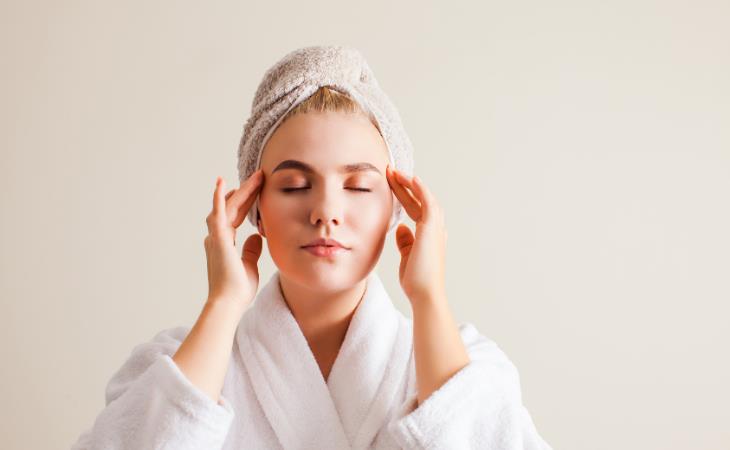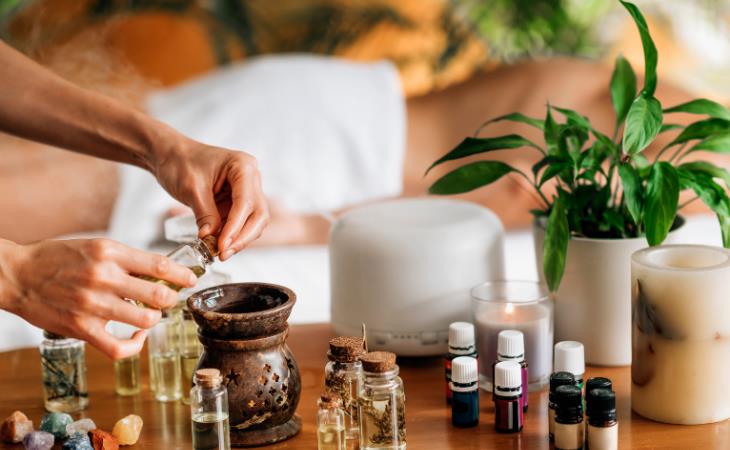

Ayurveda means "knowledge of life." It is a sister science of yoga, meant to provide a practical approach to physical health based on the belief that the mind cannot rest in an unhealthy body. Ayurveda does not separate the human body from the natural world. According to this ancient medicine, the body is made up of the same organic elements found in nature. The microcosm and macrocosm do not exist separately.

According to Ayurveda, five elements make up the world. These are fire, water, air, earth, and ether/space. These elements come together to form three qualities that manifest in our bodies as physical and mental attributes, dividing humanity into three body-mind types called doshas.
Every person has all three doshas in them. The quantities and balance between the doshas determine one’s physique and mentality.
The Vata dosha corresponds to air and ether.
The Kapha dosha corresponds to earth and water.
The Pitta dosha corresponds to the fire and water elements.
Vata types are usually lean, with light bone and muscle structures. They tend to have dry skin and hair. They don’t have a very big appetite, and their immune system is sensitive. They sleep lightly but dream plenty. Their minds usually race, and sometimes their thoughts get scattered. They are creative, full of ideas, love being active, and may be described as eccentric as they tend to think outside the box. Their energy comes in big bursts that fade quickly. When around their friends, they tend to be chatty.
Pitta types are usually medium-built. They have a strong digestive system, gain or lose weight with relative ease, and build muscle at a moderate pace. They usually have a fair complexion and either red or blonde hair. Their skin may be sensitive and prone to redness. Pitta types are competitive. They are always busy working on projects. Pittas are determined, ambitious, organized, and hard-working, and they thrive under a structured routine. They can get aggressive if you don’t keep up with their pace.
Lastly, Kapha types tend to have a larger build with a heavy bone structure. They may find it challenging to lose weight, but they build muscle quicker than average. Kapha types have healthy skin. They possess a strong immune system and high endurance. Their memory is sharp. Their nature is grounded, calm, and connected. They enjoy slow, steady activities and can be described as givers. Female kaphas are very maternal.

As mentioned above, each of us has all three qualities in our bodies. When either is out of balance for too long, they manifest through mental or physical symptoms.
An unbalanced Vata dosha manifests in the following ways:
– Dry skin
– Insomnia
– Headaches
– Stiffness in the neck or legs
– Tremors
– Arthritis
– Anxiety or fear
– Impatience or brain fog
– Bloating or constipation
– Cold hands and feet.
An unbalanced Kapha dosha manifests in the following ways:
– Lethargy and fatigue
– Respiratory issues
– Loss of appetite
– Excessive mucus
– Excessive weight gain, especially in the hips and thighs
– Sadness or depression
– Feelings of resentfulness and drooling over the past
– Resistance to change
– Heaviness or feeling stuck.
An unbalanced Pitta dosha manifests as follows:
– Skin problems such as acne or psoriasis
– Inflammation
– Muscle pain
– Acid reflux or heartburn
– Fatigue
– Migraines
– Anger, frustration, and irritation.

How to rebalance a dosha
Ayurveda views food as medicine. It is focused on preventative healthcare rather than targeted treatments. To balance each dosha, one has to nourish themselves with the opposite energy.
So, for example, if your pitta dosha (which is made up mostly of fire) is out of balance, you’ll want to enjoy cold temperatures or soothing, cold foods. This will quite literally chill the fire. The therapeutic modalities Ayurveda offers are changes in diet and lifestyle, herbal remedies, yoga, meditation, and breath work (pranayama).
The majority of people have two dominant doshas, plus a fraction of the third. Some people only have one dominant dosha, and very few lucky people enjoy a natural balance between all three.
What is my dosha type?
The optimal way to find your dosha is a professional assessment with an Ayurvedic practitioner. However, there are some online quizzes you can take to get a general idea. If you are interested in finding out which of your doshas may be out of balance, we recommend the dosha quiz from Banyan Botanicals. At the end of your quiz, you will be offered further reading for your dosha make-up. You will have to create a free account. If you wish to avoid that, we can recommend Chopra’s dosha quiz.
Related: Adaptogens: Herbs Whose Job It Is to Fight the Fall Blues

The Ayurvedic practice of abhyanga is recommended for all mind-body types. It is particularly soothing for an unbalanced Vata dosha, but all doshas will benefit from it.
Abhyanga promotes longevity, well-being, balance, stability, and self-love. It is a grounding and relaxing practice that nourishes the body, lubricates the joints, tones the muscles, and supports skin health. Abhyanga promotes lymph and blood circulation, thus aiding in the elimination of impurities and the detoxification of the body. It calms the nerves, supports sleep hygiene, and builds stamina.

You will need about a quarter cup of warm oil. The ideal time to perform abhyanga is in the morning, after a bowel movement, but any other time of the day will do. Abhyanga should be done on an empty stomach (at least two hours after a meal).
Start by oiling your entire body in the following order:
Top of the head
Scalp
Ears
Face
Back of the neck
Shoulders
Arms and hands
Back
Chest
Belly
Pelvis
Legs
Feet
The areas marked in bold are the most significant. Pay special attention when oiling and massaging them. Use long strokes along your bones and circular motions for every joint. Once you've oiled up, start the massage. This video will walk you through the steps:
Short on time? Here's a shortcut
After the oil has sat on your body for 15-60 minutes, wash it all off. If you don’t have time, you can only oil the top of your head, ears, and feet. Alternatively, lather on a thin layer of oil after the shower while your body is still warm. Let it soak.
Vata types will benefit most from 4-5 times a week. The best oils are sesame, almond, or avocado.
Pitta types will benefit most from 3-4 times a week. The best oils are coconut and sunflower.
Kapha types will benefit most from 1 to 2 times a week. The best oils are safflower or flaxseed. Kapha types may also skip the oil and do dry brushing instead.
All body types will benefit from jojoba oil.
Don't feel guilty if you don't do this daily. Try abhyanga when you feel like it - it's about self-soothing and nourishment, not another stressful wellness ritual you have to complete to be healthy!
Cover image: YouTube